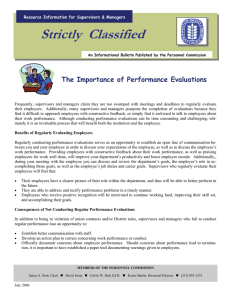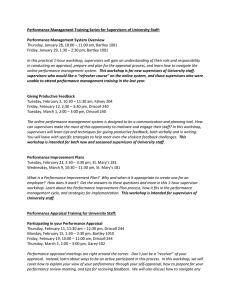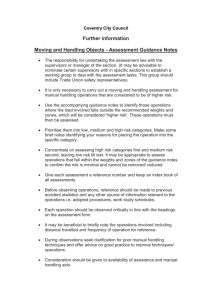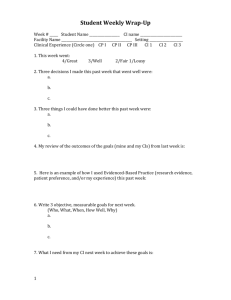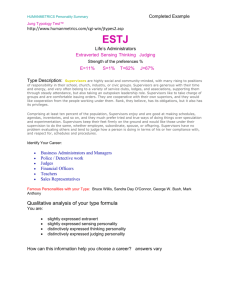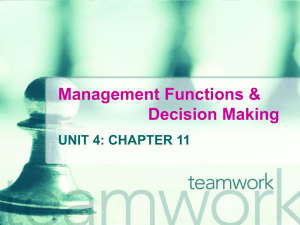3. Do not evaluate feedback and performance
advertisement
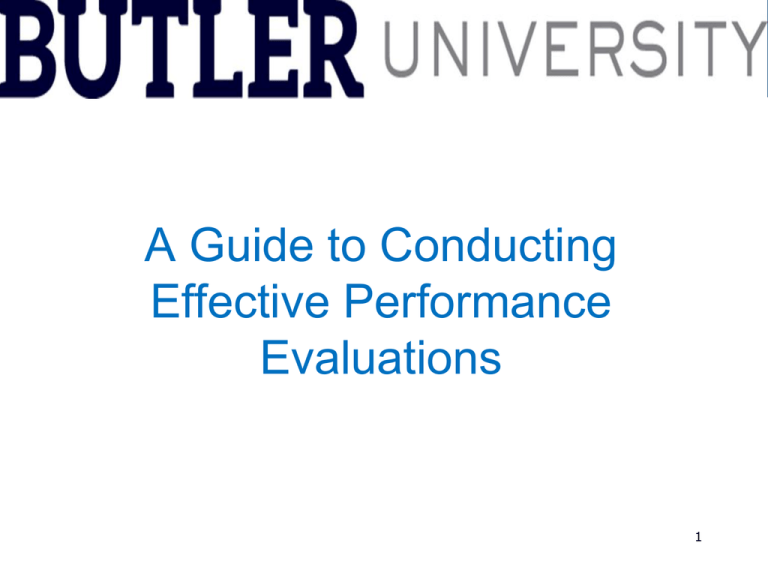
A Guide to Conducting Effective Performance Evaluations 1 By the end of this module… • You should understand how to: – Assess and prepare necessary documentation. – Plan for effective evaluation discussions. – Conduct fair and effective evaluations. – Set measurable performance goals. Guidelines for Preparing the Evaluation 1. Gather objective, accurate and factual performance data from a variety of sources: – Last evaluation to identify previous period’s job performance and the past year’s performance expectations – Feedback from pertinent sources: peers, student surveys and/or team members – Observations of the employee’s performance – Samples of performance and productivity 2. Compare feedback and performance data to established policies, procedures, expectations and established goals to determine ratings in each area over the time frame of the evaluation. Guidelines for Preparing the Evaluation (cont.) 3. Do not evaluate feedback and performance only on recent or singular events unless significant. 4. The intent of performance based feedback is to help the employee learn, grow, and develop. 5. Consequences and expectations should be made clear, so have this information ready if necessary. 6. Be prepared with Butler University strategic goals, departmental, professional and personal goals for the upcoming evaluation year. Performance Feedback Checklist Feedback should be: Descriptive Behavior-based Specific Clear Focused on results Important to change Tied to goals, expectations and areas being evaluated Representative over the entire evaluation period Performance Feedback Checklist Feedback should NOT be: Personal or judgmental Remarking on personality Broad generalities Sugar Coated or wordy Out of employee’s control Irrelevant to goals and expectations Unrelated to key performance areas Focused on a single incident 6 Purpose of the Evaluation Meeting – Review employee’s performance over past evaluation period. – Evaluate employee’s performance against clear and specific goals and expectations (task and behaviors). – Hold employees accountable for performance goals and expectations. – Provide accurate and honest feedback. – Clarify standards of performance. – Provide opportunities for professional development and growth. – Lay the groundwork for future goal planning and attainment. 7 Tips on Conducting an Effective Evaluation Meeting • The meeting should be uninterrupted, one on one and contain no surprises. It should be held in a neutral, quiet location and situated to invite interaction. • Incorporate effective positive and critical feedback. • Listen actively and intently, stay focused on the subject. • Create a “we” mentality, encourage two-way feedback. • Ensure that the employee understands performance standards, gaps, results and ratings received. • Establish dialogue with the employee to help him/her understand and accept responsibility to take steps for improvement and development. • Before the meeting is over, build consensus with the employee on goals and expectations for the upcoming review cycle. 8 Delivering Difficult Feedback • Use tact and objectivity to approach the employee about performance feedback, but be direct. • Seek to understand why the employee received the rating they did. Ask if they understand: • Priorities • Expectations • Standards of Performance • Process to effectively achieve desired results • Remain calm and focused on subject. Stick to objective measures of performance. • Allow the employee uninterrupted time to explain their position. • Give examples of specific behaviors or actions. • Confirm that the employee is willing to participate in implementing solutions to address performance gaps. • Seek solutions from Employee to address performance gaps and add solutions of your own to create a joint resolution. 9 Ten most common performance appraisal errors 1. Gut feeling (subjectiveness). 2. Improper preparation - poor documentation. 3. Halo effect - the employee is a "saint" so must have high scores. 4. Attribution - tending to see poor performance more within control of the individual and superior performance as more of an influence of external factors. 5. Stereotyping – the tendency to label an individual according to an oversimplified image or idea. 10 Ten most common performance appraisal errors (cont.) 6. Contrast effect - contrasting one employee's accomplishments against another. 7. Unfair comparison - comparing one employee against another. 8. First impression. 9. Recency effect - overemphasis on recent performance (either positive or negative). 10. Negative approach - catching them doing something wrong (as opposed to the One Minute Manager Approach of catching them doing something right) Traits of the Best Performance Management Systems Performance management is a daily supervisory responsibility and integral to management. If proper goal setting, coaching and feedback are done periodically, then the results of the performance evaluation will not be a surprise. • Supervisors understand and communicate how the goals of the organization directly impact the employee's job and performance. • Supervisors see performance appraisal, training and development and career mapping as interrelated and essential for the organization's success. • High performance is rewarded appropriately. Mediocre performance is not rewarded. • Good managers are honest, fair and caring with all employees. They remember to listen and promote 2-way communications. 12 Traits of the Best Performance Management Systems (cont.) • Good managers know that turnover costs are high. They know that to retain employees, ongoing feedback, development and training are essential. • Supervisors understand that following the policies and guidelines for performance management is critical for successful defense in a legal setting. • Supervisors use the same process for all employees. • Job content is used in developing goals and evaluating performance. • Evaluations are behavior oriented and not personality trait oriented. • Employees are given the right to respond to the evaluation in writing and both the supervisor and employee sign the final copy. • Confidentiality is respected. 13 Goal Planning • Goals for each department and the employees within should relate back to the University’s strategic plan (Butler 2020). • Identify the key related tasks/results for the department and therefore the employee to make the goals relevant to employees. • Identify the consequence for not achieving the results as it relates to the college, department and employee. • Weigh the goals/results to verify priorities. 14 Goal Setting: Supervisors and direct report should engage in an interactive process to develop SMART Goals for the upcoming evaluation year: The SMART process provides a method for creating and monitoring goals that are achievable and measurable. • Specific – Clarify the details of each goal and the end result. • Measurable – Describe concrete criteria that will be used to determine progress. • Attainable – Goals should be within your reach. Goals should be challenging yet attainable. • Relevant – Goals must be aligned with the goals and priorities of the University. • Time Bound – Goals should contain specific milestones and deadlines with completion dates. 15 Goal Setting continued: • Provide descriptions and definitions of the goals so that they are clear. • Whenever possible assign metrics to goals so that standards of measurement are well defined for employees. • Throughout the evaluation cycle, have periodic conversations about the goals and their progress and provide support if and when needed. • Ensure that goals are updated to reflect the goal’s progress and attainment. If goals are cancelled at the organizational level, then document this. • Provide weights to the goals so that employees know what the priorities are and can act upon the goals accordingly. 16 Closing the Meeting to Reinforce Actions • Ensure performance goals, objectives and expectations are mutually agreed upon. • Complete all the necessary documentation. • Express value of the employee’s feedback. • Express appreciation for the employee’s time. 17 Questions???? • Please direct questions to the following HR staff: Anila Din at adin@butler.edu or 317-940-6683. 18

